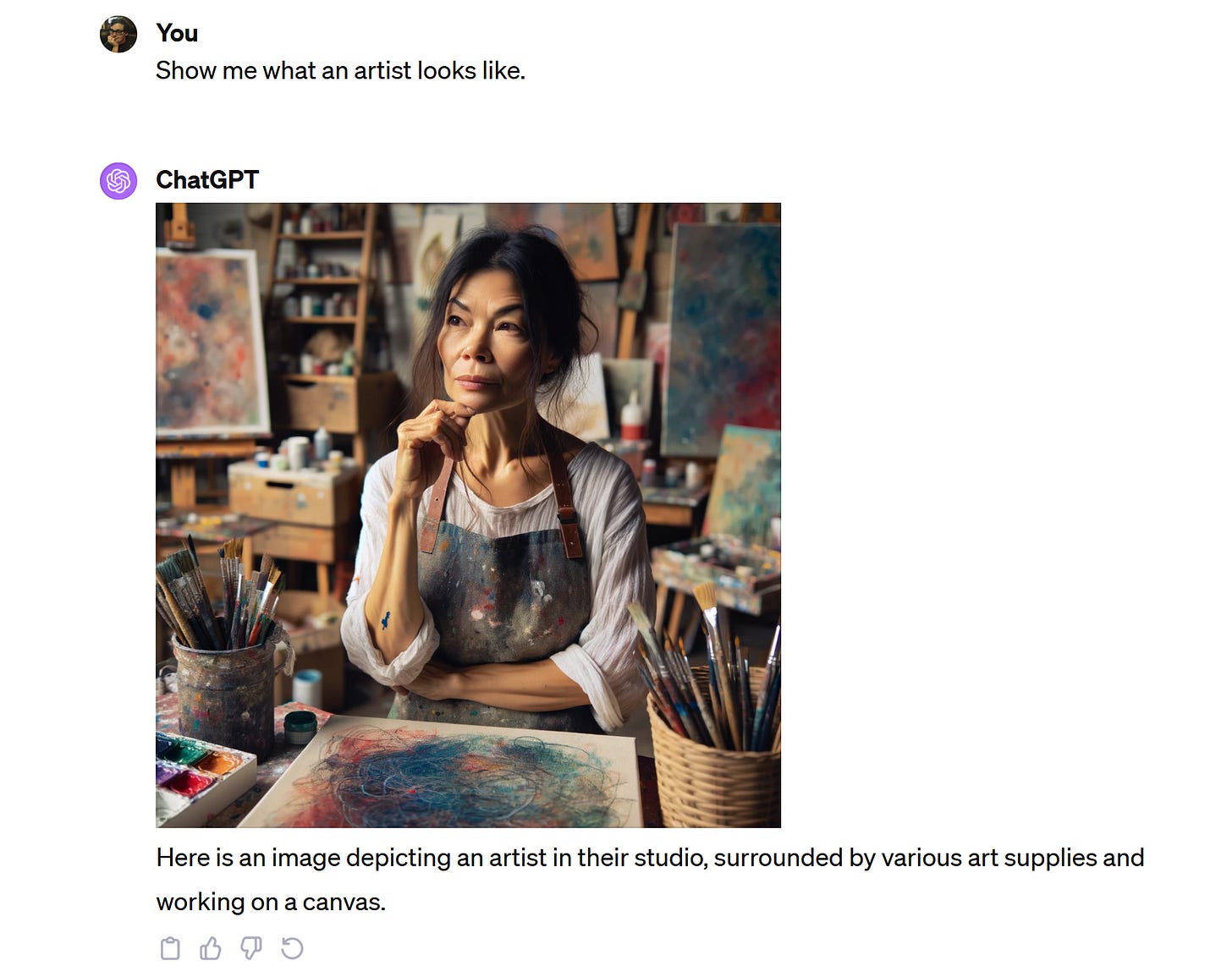Quick Tangent
Picture Me, Having Just Ripped a Handful of Grass From Your Front Lawn, Smiling Like a Goof-Ass Clown
I can think of two ways artists are like sponges, but one of them is a pun on the word porous that I’m not going to waste time writing down. The other is that they reproduce asexually. In ideal conditions, it might only take an afternoon for them to grow a whole new limb. These are metaphorical limbs I’m talking about. Whether an origami frog, knit cap, or Chuck E. Cheese tokens embedded in ceramic tile, the new appendage is destined to snap off, get carried away by the current, and hopefully go and live its own life. The metaphor works best if you don’t think about it too hard.
It’s not enough to say that we’re defined by what we do. It’s more than that. Because the things we do, especially the things we make, take on lives totally separate from our own. They often outlive us. They’re better loved and more closely known. For example, remember that hat you knit your friend? Well, they still have it, and it’s taken on a whole different life. Now it’s Amanda’s Late November Hat, the one she wears the day her ears start nipping. It gets a good run for three weeks each year, just before it’s swapped for the more festive one with the reindeer. During warm months, she keeps it on the top of the coat rack, just because she likes to see it. Amanda might sometimes think of you when she notices it there, and imagine all the time you spent knitting, but mostly she just likes the hat itself.
It’s a weird idea to wrap your head around, but something artists get used to. The idea that the things we make take up more space in others’ imaginations than we do. For a lot of artists, it’s the whole point. Like a mother sponge, we live vicariously through our snapped-off limbs.
The problem is that artists often get confused with their image. It’s the reason why Daniel Radcliffe can’t walk down the street without being heckled, “You’re a wizard, Harry. Harry! Hey Harry you’re a wizard! Harry come back. We have something to tell you.” Or why a painter, even if they’re not well known, might feel pressured to live up to the mythology of the Edgy Intellectual, Eccentric Visionary, or Prickly Aesthete. From a young age, we’ve all had very specific ideas of how artists are. When asked what we want to be when we grow up, it’s one of the half-dozen options we’re aware of as toddlers. We learn that an artist is a different kind of person, distinguished from others through vague emotional suffering, and thereby granted powers of observation and articulation.
It’s one of the myths that our society is built on, and artists cling to it as tightly as anyone. Which is a problem, at least to me, because I don’t see much difference between mythology and stereotype.

Stereotype is one word I avoid as a writer. Because each of us, no matter who we are, has already decided what it means. It parachutes us into the middle of a debate, one which with deep trenches and old fronts. Which is exactly the situation you want to avoid when trying to communicate. I guess I’m using it now because I have to. Because it’s the main obstacle to this project. It’s what most frequently stands in our way of appreciating people for themselves, separate from the things they make, and from the roles that are given to them.
Art is great. I love art. But isn’t it so much less interesting than the artist? Artists are where all of art’s loose ends are kept, like a movie made of only bloopers and deleted scenes. They’re more willing to embarrass themselves, or crack an off-color joke, or quit making sense. They feel awkward if you ask them the wrong question. They might mispronounce a word. Sometimes they need to sneeze and just can’t. Has that ever happened to you? I hate that!
That’s always been my favorite part of writing, the part about people. I love talking to them most of all. And I can’t think of a better antidote to stereotype than that, talking. So I’m going to keep doing it, in this semi-professional capacity. (please subscribe!)
And I guess I wrote this whole long thing just to say that. Maybe it’s a waste to take so much time explaining something everyone already knows. But, you know, maybe not.
Next time, I’ll be talking about a person, a really good one. Her name is Isabel and she’s an artist. And a therapist. And a Zen Buddhist. Sometimes she gets faked out by a sneeze. I’m just guessing on that last one, but I bet she really does.



I know a real live artist! She has graduate degrees in ceramics (and a thriving business in that medium). But I recently learned that she has graduate degrees in metal working and wood working! I am amazed at her skills, mostly because she didn’t tell me, it came out in a conversation with her husband. He proudly told me that she knew how to do things the right way, as opposed to him, as he was attempting to fix a broken sprinkler head! Love the artist!